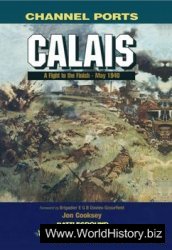With the demise of Chavin, regional interaction fades and generally the Peruvian culture seems to have slipped back into more informal political entities of hamlets, villages, and small towns of no more than a thousand people. Only around 100 ce, do we see the emergence of several wealthy civilization centers, the Moche along the northern coast of Peru, the Nazca to the south, and the Tiwanaku in Bolivia. All of them are full-fledged agro-cotton-flshing cultures. Somewhat similarly, in Central America, after the Olmec’s gradual demise, the ecological, religious package, now on somewhat more secure footing, moved into southern Mexico, where we see the construction of Monte Alban around 300 bce; to central Mex-
Ico, where we see the rise of Teotihuacan begin around 100 bce; and to Guatemala, where we see the early Mayan cities from about 100 ce onward.
Because of the dominance of the high civilizations in the historical narratives of the Americas, it is common for maps of the pre-Columbian Americas to show the extent of the Incas and Mayan civilizations while leaving the rest of the land mass unlabeled as if the people in these places did not exist. In Boston, the exhibition on the Americas at the Museum of Fine Arts leads the viewer first through the Aztec room, with its impressive collection of stone sculptures, to a back room where one can learn about the riverine people and the Plains Indians, who make only “crafi: items” such as baskets and spears. Needless to say, such attitudes are misleading. The Amazon River people provided medicinal plants, tubers, timber, rubber, and various types of food in exchange for cotton, potatoes, and prestige items. This relationship is paralleled in Mexico with an increasingly important north-south relationship with the Southwest of the United States. Turquoise was a key element in that exchange. The presence of powerful empires, in other words, was dependent on their influence and trade with these “blank” areas, which were beyond the reach of their military and economic machines.
In this book, we are moving only to the very threshold of agricultural civilizations. Other books can carry the story forward from there. Here we want to concentrate on non-urban people who around 100 ce—to pick an arbitrary date but one that is ofi:en given to mark the rise the high civilizations in the Americas—populated a huge percentage of the Americas.
Whether it was trade or contact in other forms, the agricultural revolution impacted at least four major areas in significant ways. These were the Amazon Basin, the Venezuela/Col-ombia highlands, the Mississippi River area, and the U. S. Southwest. These areas developed strong vertical chieftain societies that persisted well until the arrival of the Europeans. They are part of a secondary agricultural horizon, one that was still tightly connected to tribal and clan traditions. As with the Aztecs and Mayans, there was a great deal of vulnerability because over-farming put these societies in continual risk. But these cultures, closer to the more mobile world of their ancestors, usually had something to fall back upon when the crops failed.
Of the four areas, the Amazon Basin is the only one to have survived—albeit to a limited degree—into the modern era. The other three more or less disappeared with the arrival of the Europeans. Nonetheless, it is clear that the Amazon tribes of today live in a significantly reduced economic environment in comparison to what one might have found before the arrival of the Europeans.




 World History
World History









